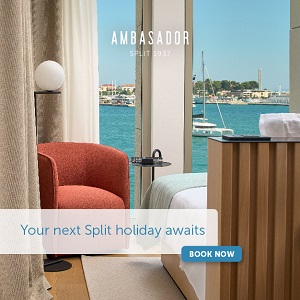SDP Marks 30th Anniversary
ZAGREB, November 2, 2020 - The Social Democratic Party presidency on Monday held a special session on the occasion of the party's 30th anniversary, with SDP leader Pedja Grbin saying that considering growing inequality, intolerance and lack of freedom, social democracy and a strong SDP were necessary more than ever.
"This may be so even more than it was 30 years ago," he said in an address to those present at the event.
"We need a progressive SDP that offers solutions to growing inequality, regarding the social system and housing, health and education, sustainable development and the green economy," he said.
He admitted that over the past 30 years the SDP might not have always been sufficiently determined and that sometimes it made unacceptable compromises regarding workers' rights and failed to protect those perceived as different or weaker.
Grbin promised that his party would in the future be "a clear barrier to corruption, clientelism and cronysm" as well as defend anti-fascism, rights of those who are weaker and women's rights.
"We are entering a new phase of a major global economic and health crisis, which has been affecting the lives of people in Croatia, and we need a different perspective," said Grbin.
The SDP, at the time the Party of Democratic Change, held its first convention on November 3, 1990 and the party marked its anniversary today as Question Time in parliament is set for Tuesday, November 3.
Attending today's 30-minute event were about 30 senior SDP officials, as well as President Zoran Milanovic and former President Ivo Josipovic.
Before the session, an SDP delegation laid flowers and lit candles at the graves of the SDP's first president, Ivica Racan, and former Social Democrat parliament speaker Boris Sprem.
Croatia Pan Europe Trains Will Run 160 Kilometres Per Hour By 2030
November 2, 2020 – From southern Spain to Budapest through Rijeka and Zagreb and from Salzburg through Zagreb, Belgrade and Skopje to Greece, Croatia pan Europe trains will run 160 kilometres per hour by 2030
In the biggest investment ever made in the infrastructure of the country's rail network, Croatia pan Europe trains will run 160 kilometres Per Hour By 2030. In an investment costing 4.5 billion Euros, 750 kilometres of railways will be modernised.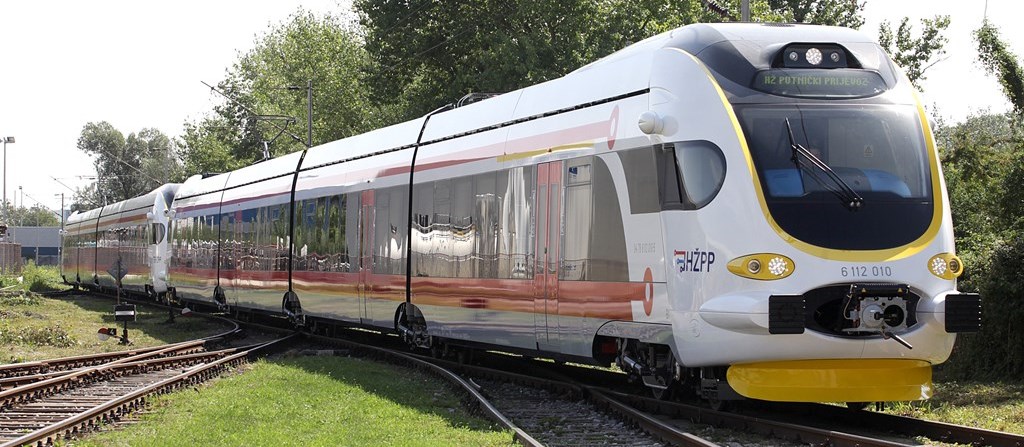 © HZPP
© HZPP
The lines that will receive the upgrade will connect Rijeka to Budapest in Hungary via Zagreb (RH2) and Zagreb to Belgrade via Vinkovci (RH1). Though these lines already exist, they have never undergone an overhaul of the scale proposed. The modernisation with ensure double lanes across the whole of both routes and facilitate passenger train speeds of 160 kilometres per hour.
The level of investment means that during the next ten years, HŽ Infrastruktura's (Croatian Railway Infrastructure Company) rebuild of the Croatia pan Europe trains network will be the largest infrastructure project in the Republic of Croatia and the largest beneficiary of EU grants in the transport sector. Most of the money for the modernisation is coming from European Union grants. Almeria on the Mediterranean, in Andalusia, southern Spain, where the Mediterranean Corridor begins © ddz photo
Almeria on the Mediterranean, in Andalusia, southern Spain, where the Mediterranean Corridor begins © ddz photo
The RH2 line is part of the Mediterranean Corridor which connects the south of the Iberian peninsula with eastern Hungary via six countries. The line runs from Almeria on the Mediterranean coast in the south-east of Spain, through Madrid and Barcelona. It passes through Marseille in France, then northern Italy, Slovenia, Croatia, the Hungarian capital of Budapest, before finishing in Záhony in the east of Hungary, not far from the border with Ukraine. The route covers more than 6000 kilometres. The Croatian section will pass through Jurdani (six kilometres north of Opatija), Rijeka, Karlovac, Zagreb, Dugo Selo, Križevci and Koprivnica.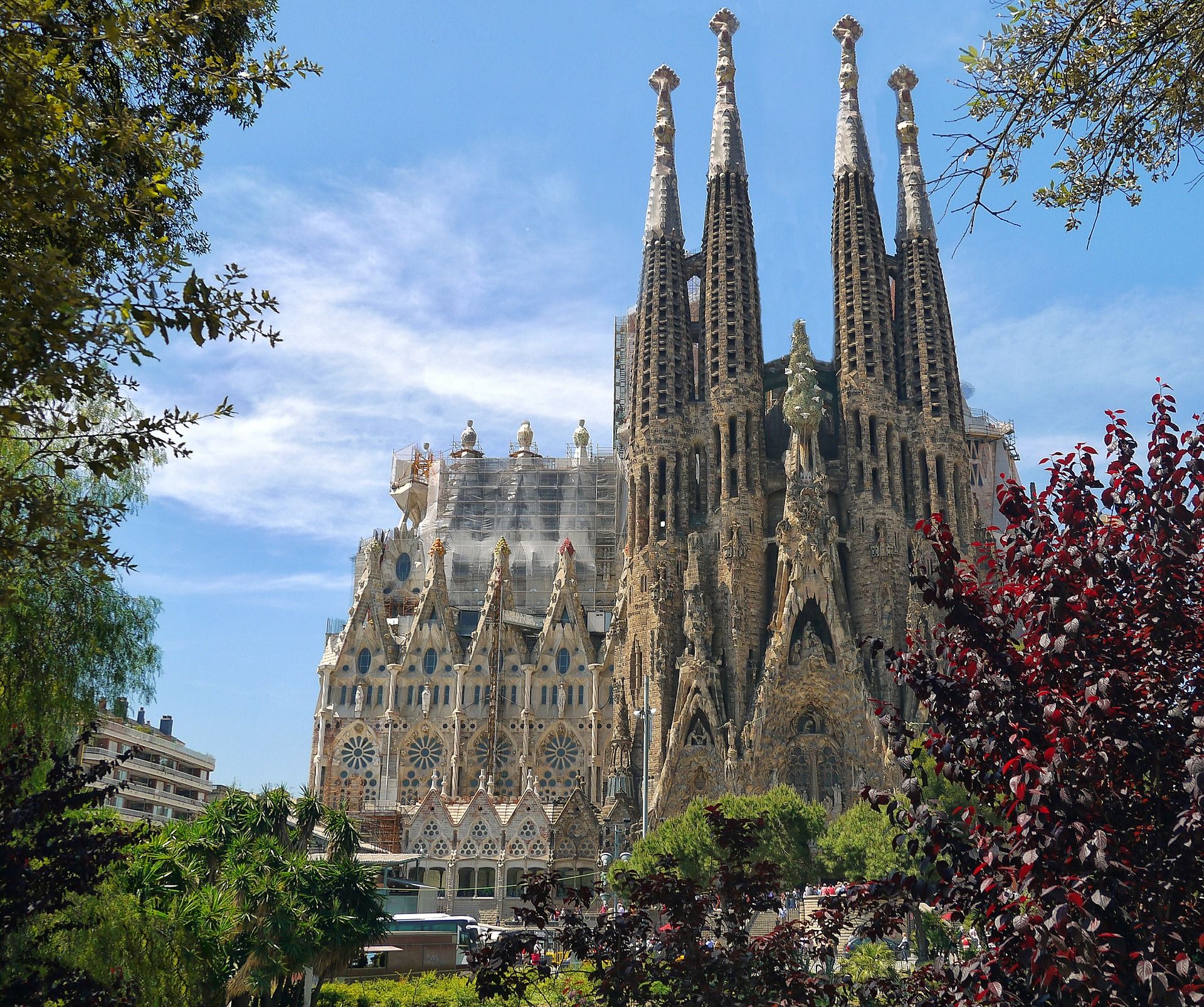 To Croatian rail passengers, the Spanish city of Barcelona will be just a few hours away by 2030 © Patrice Audet
To Croatian rail passengers, the Spanish city of Barcelona will be just a few hours away by 2030 © Patrice Audet
The RH1 line is part of the Pan-European Corridor X. The Croatia pan Europe trains section of this transport route was once one of the three lines taken by the Orient Express. The modernised rail line will start in Salzburg, Austria and pass through Ljubljana before reaching Zagreb. The line will pass through Slavonski Brod and Vinkovci before making its way to Belgrade, then Niš in southern Serbia. The old Oriental Express line then headed east, to Istanbul via Sofia, Bulgaria. The EU-funded train section of the Pan-European Corridor X instead heads south, to Thessaloniki in Greece via Skopje in Macedonia.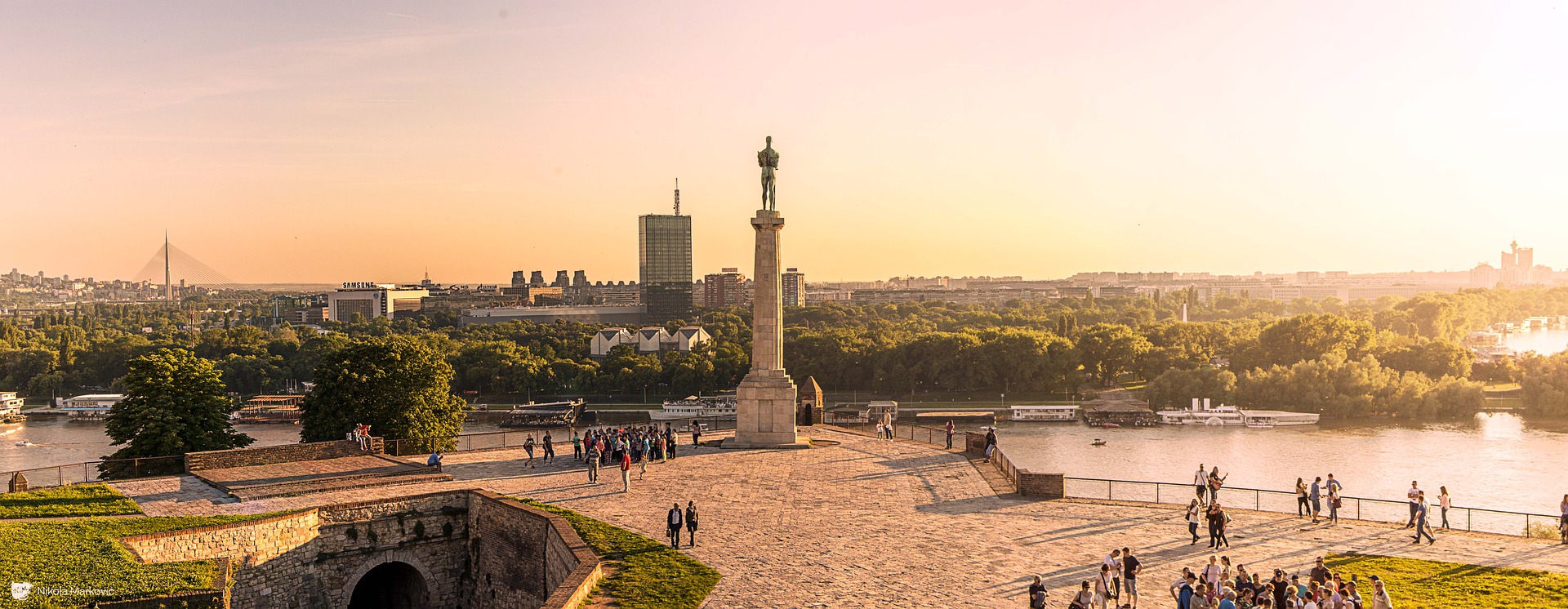 The rail journey time between Zagreb and Belgrade (pictured) will be shortened considerably by the improvements © Djordje Jovanovic
The rail journey time between Zagreb and Belgrade (pictured) will be shortened considerably by the improvements © Djordje Jovanovic
Trains are currently the greenest transport option for long-distance travel. As the world heads in the direction of seeking energy sources that do not rely on finite fossil fuels, rail also currently looks to be the long-distance travel option best-equipped to meet this challenge. In the future, visitors from all across Europe may increasingly rely on the Croatia pan European trains network in order to access the country. The improvements also increase business and leisure opportunities for Croatians in Europe.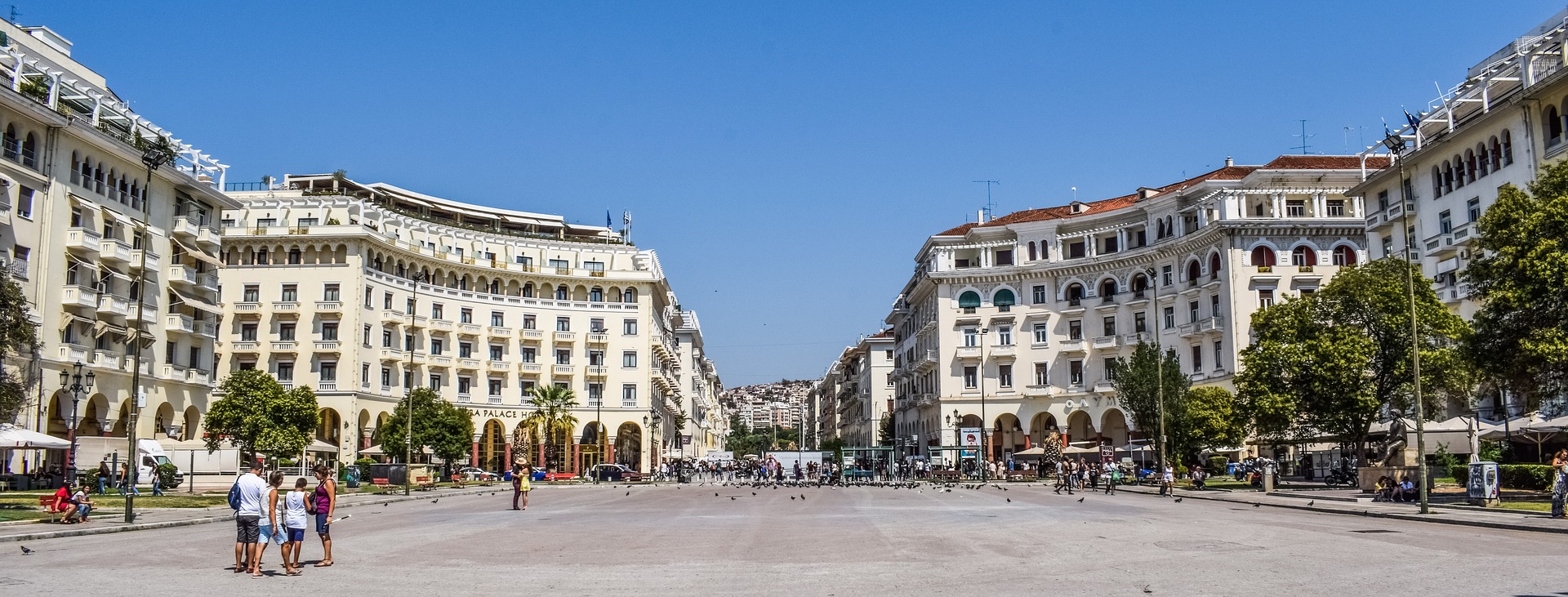 Thessaloniki in Greece is one of the most popular cities in Europe for visitors. The renewed rail section of the Pan European Corridor X will end here © Dimitris Vetsikas
Thessaloniki in Greece is one of the most popular cities in Europe for visitors. The renewed rail section of the Pan European Corridor X will end here © Dimitris Vetsikas
Around 935 million Euros was invested in the Croatian railway infrastructure between 2010 and 2019. The new investment dwarfs those figures. The initial investment, occurring between 2020 and 2024 amounts to as much as 1.8 billion Euros, of which almost 78.7 per cent is co-financed by the European Structural and Investment Funds (ESI) and the Connecting Europe Facility (CEF). From 2025 to 2030, EU funds totalling more than 2.7 billion Euros are expected to be invested in the Croatia pan European trains network.
Freight train passage along the lines will also be increased, reaching a new speed of 120 kilometres per hour. The Croatia pan European trains network also offers great potential to open up continental Croatia regions to international visitors. The Croatian railway network currently has 2,617 kilometres of track, of which 274 kilometres are double-track and 980 are electrified.
For the latest travel info, bookmark our main travel info article, which is updated daily.
Read the Croatian Travel Update in your language - now available in 24 languages
Prostoria Launches New Croatian Design
November 2, 2020 - Contrary to the first impression and the sound of it, Neisako is not a Japanese brand or a variety of sushi. It is a Croatian design brand made of two creative people – namely – Sanja and Neven Kovačić who have developed an innovative reclining chair by the name Kontrapunkt, which was launched a few days ago in the already famous furniture shop/brand – Prostoria.
Kontrapunkt is an elegant minimalist armchair that easily transforms into a chaise longue and can be found in Prostoria’s flagship stores in Split, Zagreb and Rijeka. With Kontrapunkt, one actually gets two equally valuable and supremely comfortable pieces of furniture in one product, as an ideal solution for all those who admire comfort and good design.
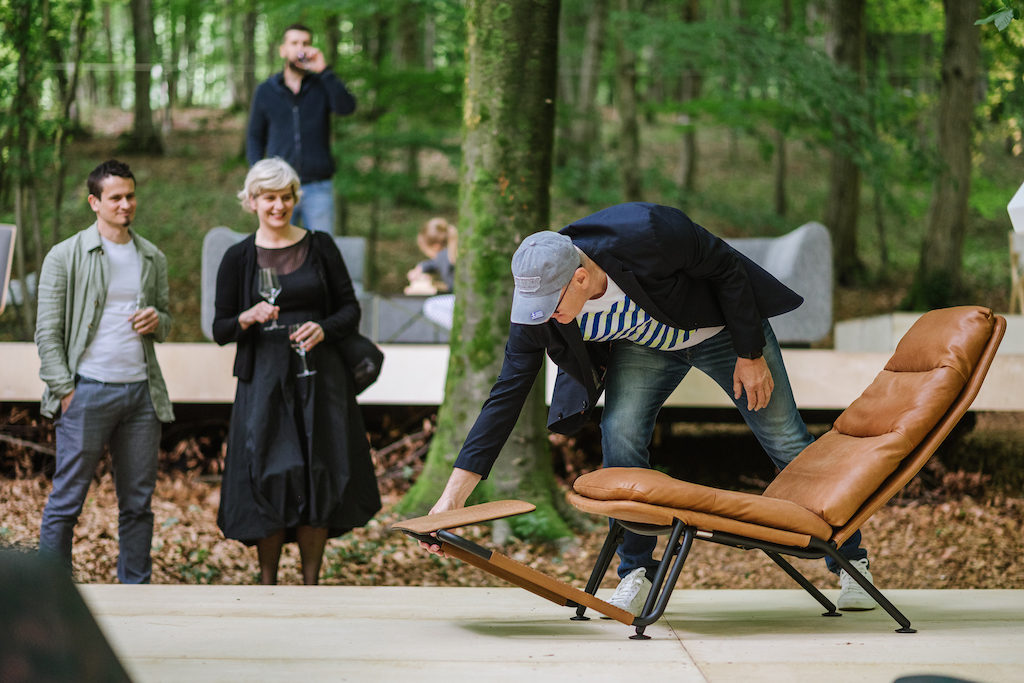
While Kontrapunkt was designed by Neisako (Neven & Sanja Kovačić) a very demanding process of its technical development was in the hands of Prostoria's engineering team and craftsmen. By joining two functions in a single object characterized by compact proportions and visual balance, the Kontrapukt armchair-chaise longue is an ideal space-saving solution for any interior and a smart alternative to regular bulky recliners.
It took two years to develop it – since the main goal was to achieve a harmonious transformation from one typological function into another, without the use of any electrical mechanisms: the end result was successful transformation that is designed so that the armchair turns into a chaise longue simply by raising the armrest.
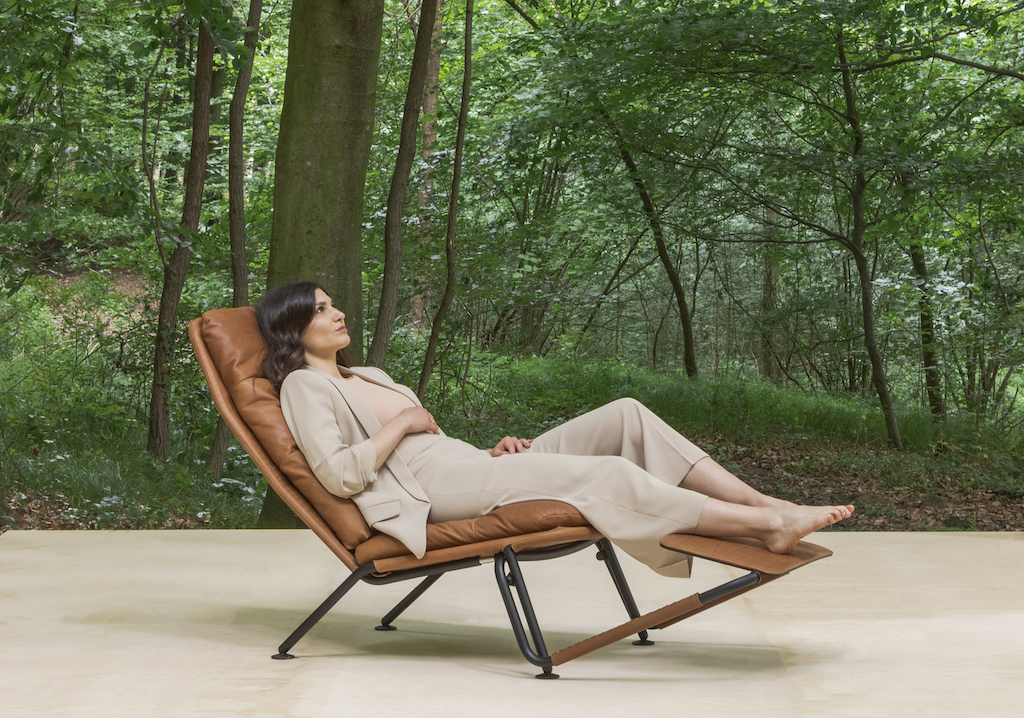
The name Kontrapunkt takes its origin from music and means "two opposite points". This resonates with its design as it denotes the principle of composition in which two parallel melodies merge into one harmonious whole. Kontrapunkt is a product that reflects skills, knowledge and high technology that Prostoria has been developing for 9 years in its factory located in Hrvatsko Zagorje.
Creating comfort has become the central domain of Prostoria’s expertise, so that Kontrapunkt, in addition to functionality, also provides the user with an almost hedonistic resting experience thanks to its excellent ergonomics, elasticity of construction materials and masterful manufacturing of upholstered furniture.
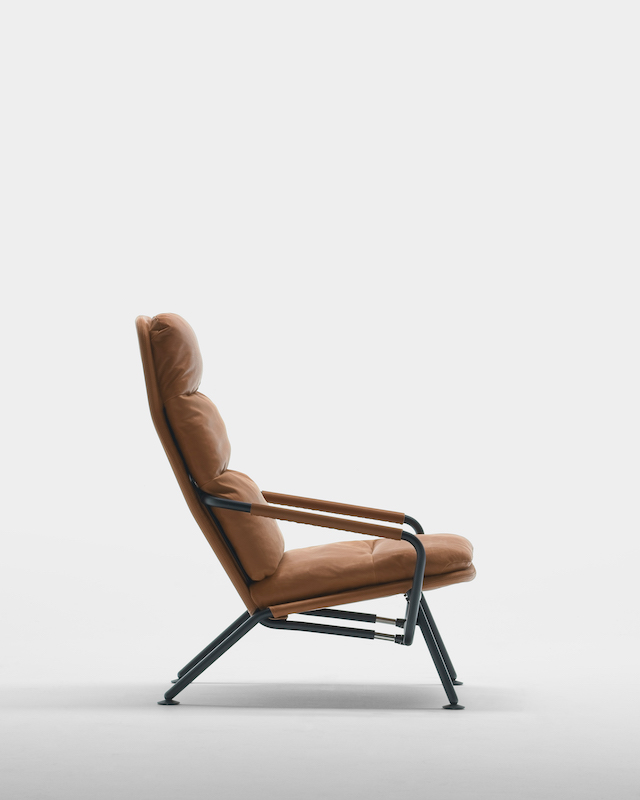
So, it seems that except for great food, superior athletes, sun&sea, and, of course - wines – Croatia has interesting design ideas to offer to the world. We’ll be following closely!
To read more about lifestyle in Croatia, follow TCN's dedicated page.
One Minute Ludbreg: Visit the Centre of the World in Northern Croatia
November 2, 2020 - One of the more curious claims coming out of continental Croatia is that it is home to the centre of the world. Learn more in the latest episode of One Minute Ludbreg.
Ask the average Croatian how much he knows about the town of Ludbreg, and the first thing that usually comes out is that it is the town which is the centre of the world.
Ask why Ludbreg makes this unusual claim, and things are a little less clear.
I had actually never heard of the town when I was first invited to visit back in 2016 by the regional tourist board director of Varazdin County Tourist Board. And what I found was a very unusual little place, which I subsequently called Ludbreg, the Most Fascinating, Unusual Little Town in Croatia?
So why is it claiming to be the centre of the world, and where exactly is the spot?
For that, you have to go to the centre of some concentric circles on the main square, check out the nearby fountain which dispenses wine once a year, learn about the legend of the beautiful Ludberga, whose struggles with Satan created the island of Antipodes on the other side of the world, and a man from Switzerland with a chart divider and love of Ludbreg.
Put all that together and you will better understand why Ludbreg is the centre of the world. Lern more in the latest in our series of One Minute Ludbreg videos below, as well as the rest of the videos published so far below that.
The One Minute Ludbreg video series is a project in paid partnership with the Ludbreg Tourist Board.
To learn more about Ludbreg beyond its stereotype as the centre of the world, read Marc Rowlands' Ludbreg, the Croatian Road Less Travelled.
For the latest travel info, bookmark our main travel info article, which is updated daily.
Read the Croatian Travel Update in your language - now available in 24 languages
Join the Total Croatia Travel INFO Viber community.
ZET, ZG Holding, Zagreb Trade Fair Centre Post H1 Losses
ZAGREB, November 2, 2020 - Deputies in the Zagreb City Assembly on Monday adopted reports on the business results of the Zagreb Holding multi-utility conglomerate, the Zagreb Trade Fair Centre and the ZET city transportation company, showing that all three companies operated at a loss in the first half of the year.
Opposition deputies, who participated in the assembly's session that was held online, either voted against or abstained from voting on the companies' semi-annual reports. None of the deputies wanted to participate in a debate on the reports.
In the period from January to June, Zagreb Holding earned HRK 854 million in revenue while its expenditure totalled around HRK 970 million, which resulted in a pre-tax loss of some HRK 116 million.
ZET's revenue amounted to HRK 569 million while its expenditure totalled around HRK 581 million, resulting in a loss of HRK 12 million.
The Zagreb Trade Fair Centre's revenue totalled HRK 23 million and expenditures around HRK 29 million, which is a loss of six million, seven times more than in the same period of 2019 when the loss amounted to HRK 857,406.
The Assembly also adopted business reports of the Zagreb Innovation Centre and the Zagreb Waste Management Centre, which show that the two companies did not incur any losses.
Brits in Croatia: Ambassador Dalgleish with Brexit Preparation Advice (VIDEO)
November 2, 2020 - As the Brexit deadline approaches, UK Ambassador Andrew Dalgleish offers preparation advice to Brits in Croatia.
I can't imagine what it must have been like to be a British diplomat these last four years.
After the shock Brexit vote in 2016, the future relationship of the UK and EU has been surrounded in confusion and rumour.
And, with the divorce deadline - with or without a deal - of December 31, 2020 (the end of the transition period), fast approaching, there is still a lot which is not known.
There are, however, some things which are known regarding the status of resident Brits in Croatia and elsewhere in the EU.
UK Ambassador to Croatia Andrew Dalgleish has issued an updated video message to UK nationals living in Croatia. The message covers important steps that UK nationals living in Croatia should do before December 31, including registering residency, health insurance and obtaining a Croatian driving licence. You can watch the ambassador's message below.
Croatia Confirms 1,165 New Coronavirus Cases, Record 32 Deaths in Last 24 Hours
ZAGREB, November 2, 2020 - Croatia on Monday reported 1,165 new coronavirus cases in the last 24 hours and 32 related deaths, the largest number of fatalities in a single day.
The number of active cases in the country is 14,734. Of them, 1,127 are hospitalised, including 94 who are on ventilators, the national coronavirus response team said in a regular morning report.
Since February 25, when the first case was confirmed in Croatia, 52,660 people have been infected with the novel virus, of whom 594 have died and 37,332 have recovered, including 2,293 in the last 24 hours.
Currently, 25,925 are in self-isolation. To date, 507,163 people have been tested, including 5,115 in the last 24 hours.
WIRE Conference 2020: Focus on the Innovation of Less Developed Regions
November 2, 2020 – The most important international conference for innovation and regional development entitled "Innovative Regions Week in Europe - WIRE 2020", will be held from 4 to 6 November 2020. This year, the WIRE conference will be held online and broadcast live.
The conference is organized by the Faculty of Economics in Split, with the support of the European Commission's Directorate-General for Research and Innovation, and it will discuss the impact of innovation on regional development.
A special focus will be on the opportunities that innovation can bring to less developed regions and their importance for recovery from the corona crisis.
Using innovation for development
As organizers announce, this year’s 11th edition of the WIRE conference will highlight the possibilities and opportunities offered by research and innovation in tackling some of today’s greatest challenges such as climate change, water protection, healthy food production, and the creation of smart cities. The conference aims to encourage the construction of an innovation ecosystem that will reveal the potential of each region in the European Union and use creative approaches for successful regional acceptance of innovation.
There will be a debate on policies that should work for a balanced flow of highly skilled workers across Europe. It will also open the topic of why some regions have a large brain drain, while other regions attract more people, and how to stimulate innovation by exchanging intellectual capital.
The conference will be attended by the Minister of Science and Education Radovan Fuchs and other dignitaries, such as Jean-Eric Paquet, Director-General of the European Commission's Research and Innovation Directorate, who will talk about the importance of funding science and innovation in Europe. The emphasis will be on the consequences of a pandemic for countries like Croatia.
Speakers include Roberta Capello, professor of regional economics at the Politecnico in Milan, and Andrés Rodríguez-Pose, professor of economic geography at the London School of Economics, who will address the importance of innovation in less developed regions.
The WIRE conference aims to inspire and encourage the community to use innovation to influence the development of its region and society as a whole, with the European Union's continued support for economic, social, and territorial cohesion.
Conference participants can expect a series of interesting lectures and discussions by experts from several European universities and scientific institutions. The most successful representatives of the European business community and representatives of local and regional self-government will talk, among other things, about how local entrepreneurial ecosystems, such as start-ups, can influence the development opportunities of remote and less developed regions, how innovation can be used to exploit marine resources in a sustainable way, and several other topics.
Improving the communities
Week of Innovative Regions in Europe has been organized since 2010, and since then annually brings together stakeholders from the research and innovation sector, EU policymakers, regional and national authorities, knowledge centers, clusters, innovative companies, and all other stakeholders who develop or want to develop innovations to improve the community they live in.
The WIRE conference is a platform that allows participants to discuss in one place about research, innovation, challenges, and opportunities in European regions, with a direct view of current and future European Union funding programs.
The conference is organized with the support of the European Commission, the Directorate-General for Research and Innovation, the Ministry of Science and Education, the Split-Dalmatia County, and the City of Split.
The host of this year's WIRE Conference edition is the Faculty of Economics in Split. The conference is being organized online for the first time due to the pandemic and will be broadcast live on the official website from 4 to 6 November. Participation is free, and participants only need to register.
For the latest travel info, bookmark our main travel info article, which is updated daily.
Read the Croatian Travel Update in your language - now available in 24 languages.
Woman from Vrbovec Graduates at 78, Travels 700 Kilometres for Exams
November 2, 2020 – In her later years, a woman from Vrbovec decided to enroll in another study programme, and it wasn’t hard for her to travel 700 kilometres to take her exams.
As HRT reports, today, it isn't really any sort of special news for someone to have two diplomas to their name, but if a person earns their second one at the age of 78 – then it is both news and a fine example.
Agneza Štajer is a veterinarian and she worked in a school for 20 years. It is interesting to note how she opted for yet another study programme. Namely, Agneza took one of her generations of students to the University of Zagreb Festival so that they could more easily choose their studies.
"The proverb says: when you want to help others, you help yourself the most," says Agneza Štajer, explaining how she helped herself come across the study of restoration, which involves 5 courses, at the University of Dubrovnik, 700 kilometres away from Vrbovec, but the distance was no obstacle for her. She has been travelling by train to Zagreb, and then by bus all the way down to Dubrovnik.
"I spent an average of 40 nights a year on the bus," says Agneza. When asked if she studied on the bus, she replied: "No, I never study before an exam."
Along the way, she was spending time on one of her hobbies – making bags.
"It’s a ball of thread and a needle that fits in a purse. If you have 5 minutes, you make 5 stitches. And if the train is late, then it’s a great work for the day," says Agneza.
She also reveals how people around her reacted when they found out she was a student. Friends, she says, responded positively, but not everyone had something nice to say about her choice.
"The vast majority are indifferent, they don't know what the point of me doing that is, and a significant number of people are mean and some can be evil," she complained, but it hasn't bothered her, as she worked hard and graduated with honours.
Now that she is retired, people are asking her for a variety of different pieces of advice – from advice to related to professional subjects, to veterinary topics, and now of course - to the field of restoration.
For the latest travel info, bookmark our main travel info article, which is updated daily.
Read the Croatian Travel Update in your language - now available in 24 languages.
To the Fields! Dalmatians Answer the Call of the Olive Harvest
November 2, 2020 - It is early November, and Dalmatians are answering the call, wherever they are - back to their roots for the olive harvest.
About ten years ago, I went to Zagreb to do a presentation to the board of directors of one of the big Koncar companies on the subject of compressed air leakage management (yes, really). The director was a man originally from Jelsa on Hvar, where I was living at the time, and in the small chat before the meeting started, there was inevitably a little discussion about life on the island.
It was late October, and he informed me that he would be returning to Jelsa the following week to take care of his fields, for this was the season of the olive harvest.
His colleagues teased him about his island ways, but there was a bond between us. Islanders in the big city, but ones who were quick to drop whatever they were doing in their posh city jobs when the call of the olives came around each year.
I saw the director on the main square in Jelsa the following week. His Zagreb suit had been swapped for Hvar olive harvest overalls. He smiled and waved.
The bond was strengthened.
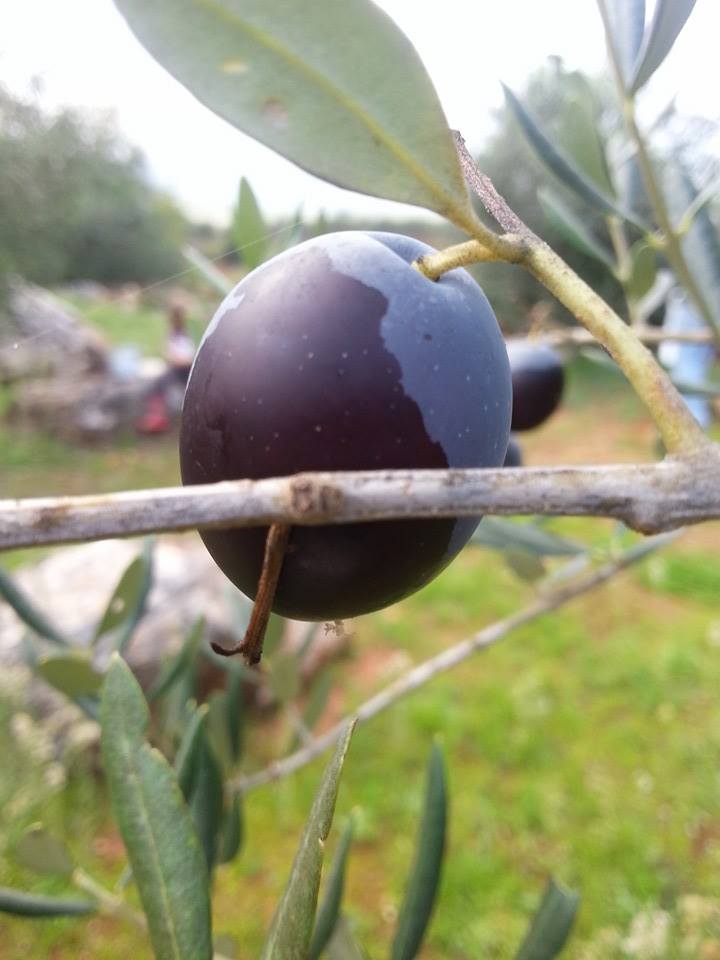
It took me a long time to understand the cultural and psychological importance of the olive harvest to local people from my foreign viewpoint - years in fact. And yet now I feel sad that I am not answering the call of the olives this year, as I definitely feel it.
When I first became part of a Dalmatian family some 17 years ago, I really didn't get the obsession with olive oil. It was on EVERYTHING. As an uncultured Manchester boy, olive oil was not something that entered my dinner plate on a regular basis, and if I had consumed more than half a litre of olive oil during the 33 years of my life before Croatia, I would be surprised. But these guys put olive oil liberally on every meal.
As with most families on Hvar, my in-laws had their own olive grove, some 80 trees in all. In a good year, this was enough to produce over 200 litres of Dalmatian liquid gold - more than enough for the needs of the household, even with its liberal use. It didn't take long for me to get hooked on the Mediterranean Diet, especially with the delicious fare served up by my wife and punica, and olive oil was now an essential part of my life.
The only problem with having your own family olive oil...
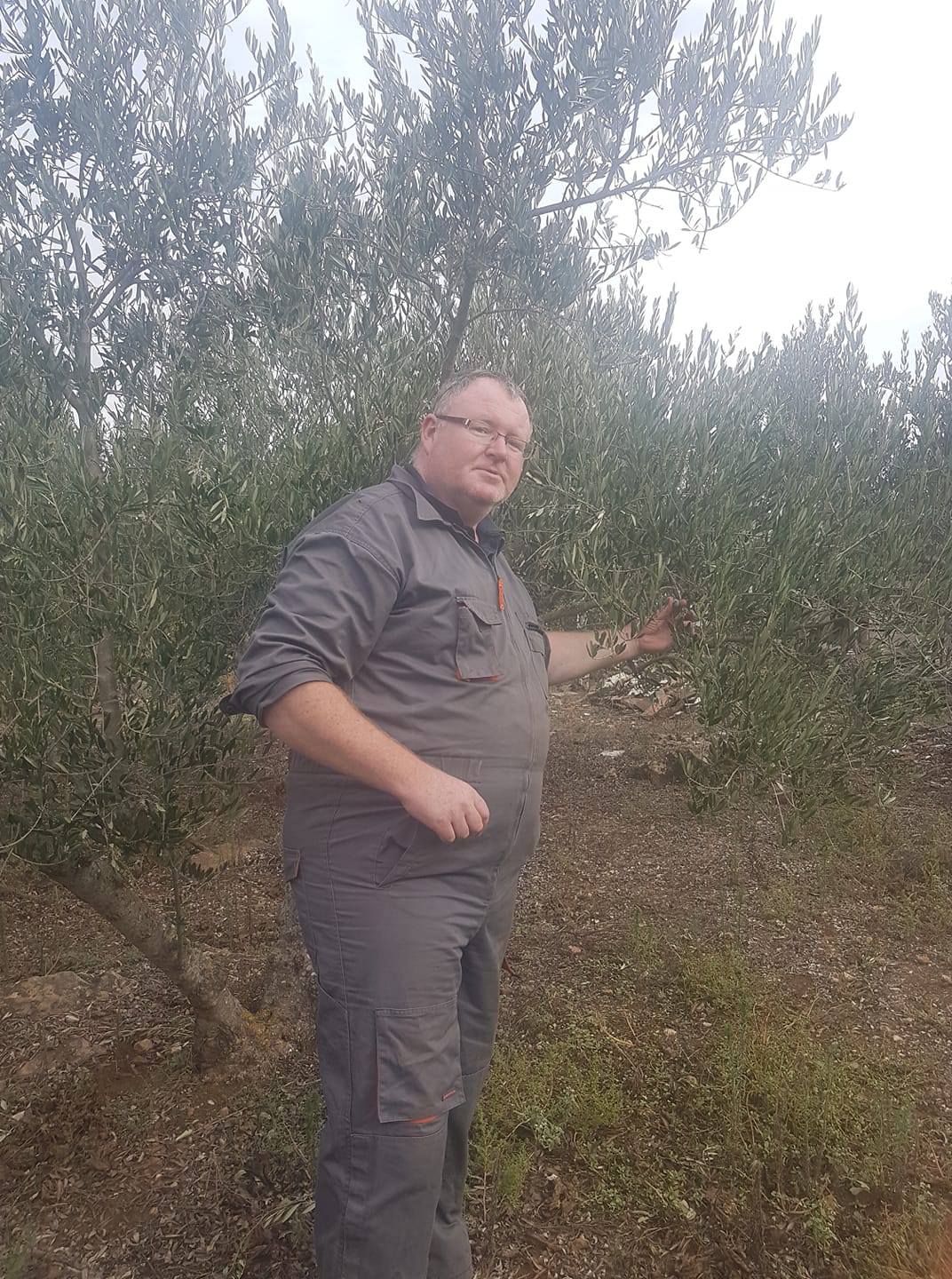
... is that someone has to pick the olives.
For years, I hated it, and I railed against the economics of it all. It would take X people to work Y days to come up with Z litres of oil. Add in the costs of the daily feast for the workers (of which more below), and surely it would be more economical to just buy the stuff from someone else.
The olive harvest was a major operation within the family, and one which I tried to avoid due to work for several years.
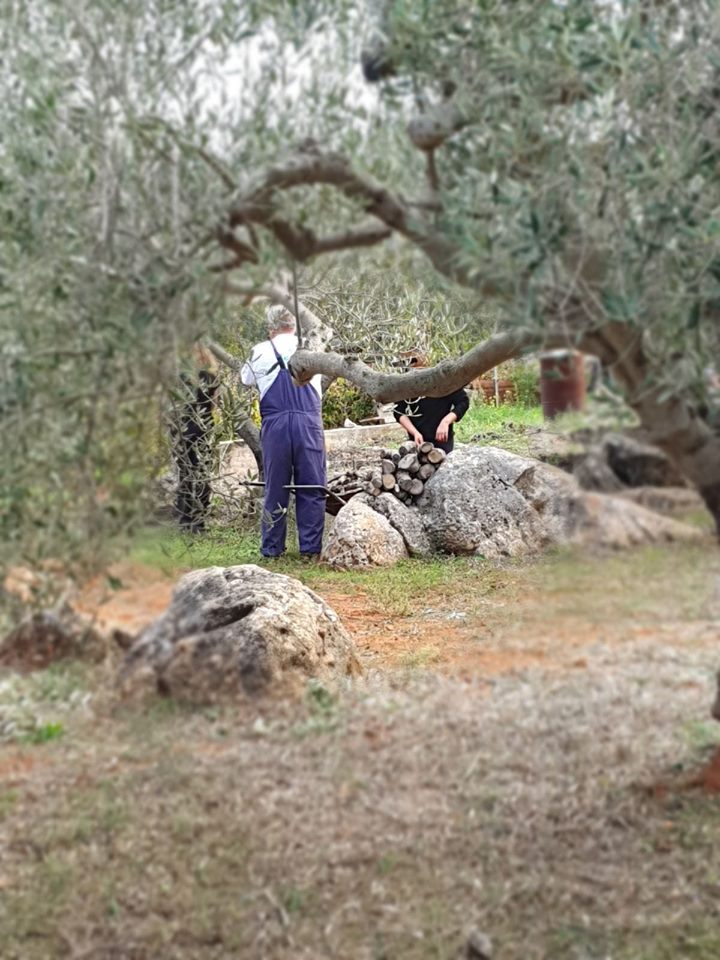
But I gradually began to understand that the olive harvest is far more than the oil produced at the end of the picking. It is an essential part of the Dalmatian way of life, and one which has changed little - if at all - in hundreds and even thousands of years.
No modern gadgets here, no time pressures, and nothing but relaxing nature, and the constant picking, picking, picking.
Extended family return to help out - either from the mainland or the island itself. Friendships that have been put on hold due to the busy tourist season are rekindled. It is an extremely social event.
If you want it to be. Or, if you was a complete detox from people and the pressures of modern life, choose a tree on your own in another part of the field. There is no hard and fast rule for olive picking - people do it at their own pace and in their own way.
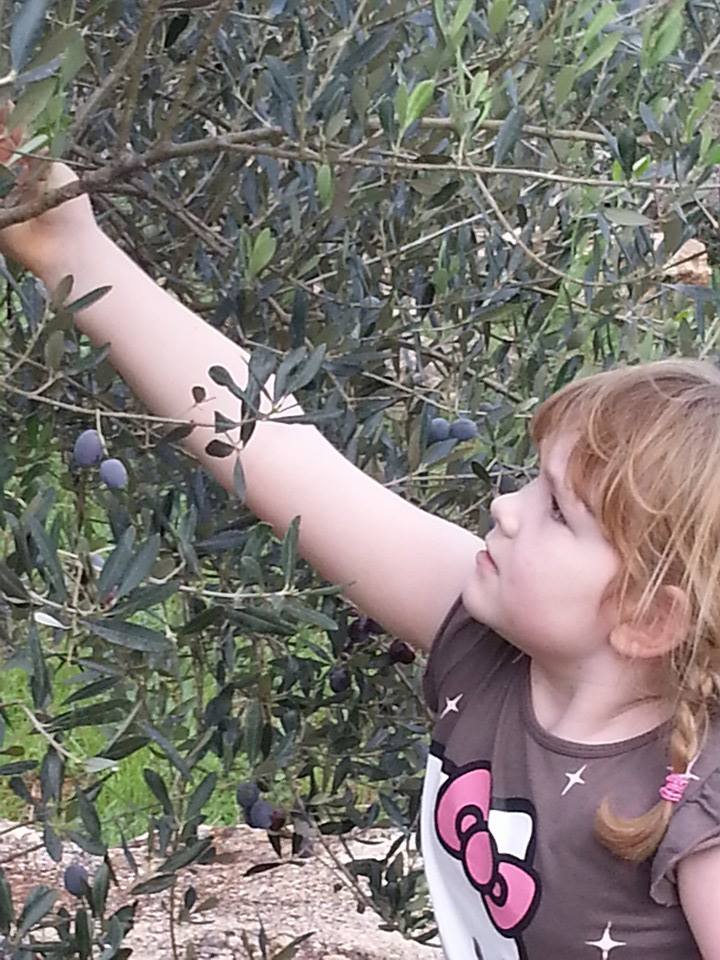
Growing up in Manchester, my connection with nature and the land was tenuous, and my fruit and vegetables grew in supermarkets. One of the things I loved about bringing up young children on a beautiful Dalmatian island was that early bond with nature. And nowhere was the bond stronger than helping out in Grandad's field...
The olive harvest is above all a family event which brings together different generations of the same family in a very relaxed setting.
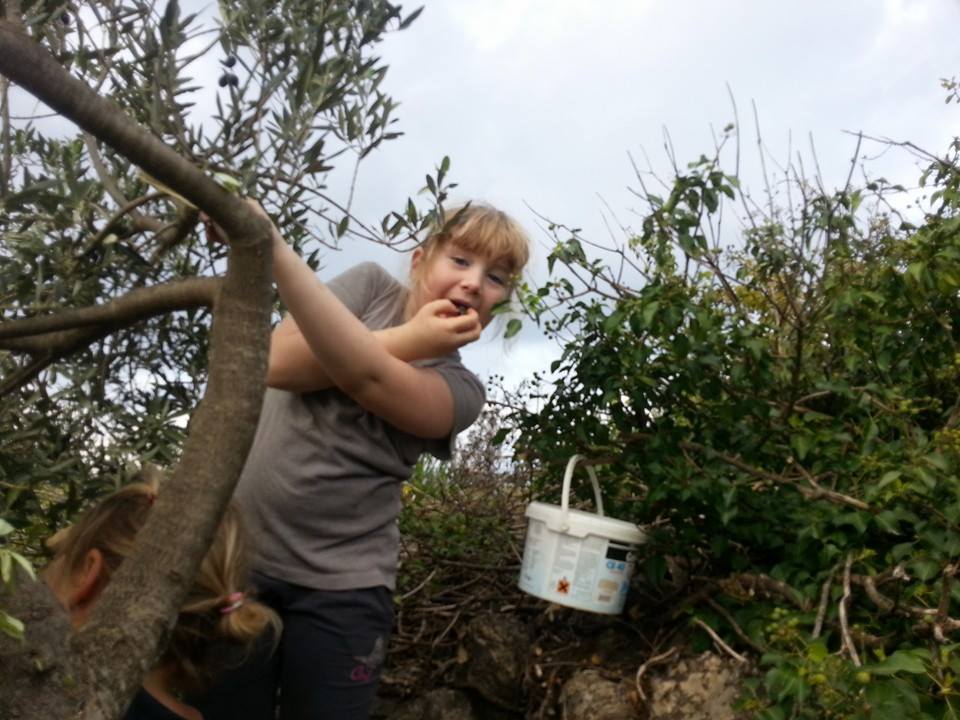
And there are plenty of opportunities for the little ones to play and explore while contributing to the olive harvest. Tree climbing is always fun, and the lighter and more nimble members of the team are always preferred to get to those harder-to-reach olives.
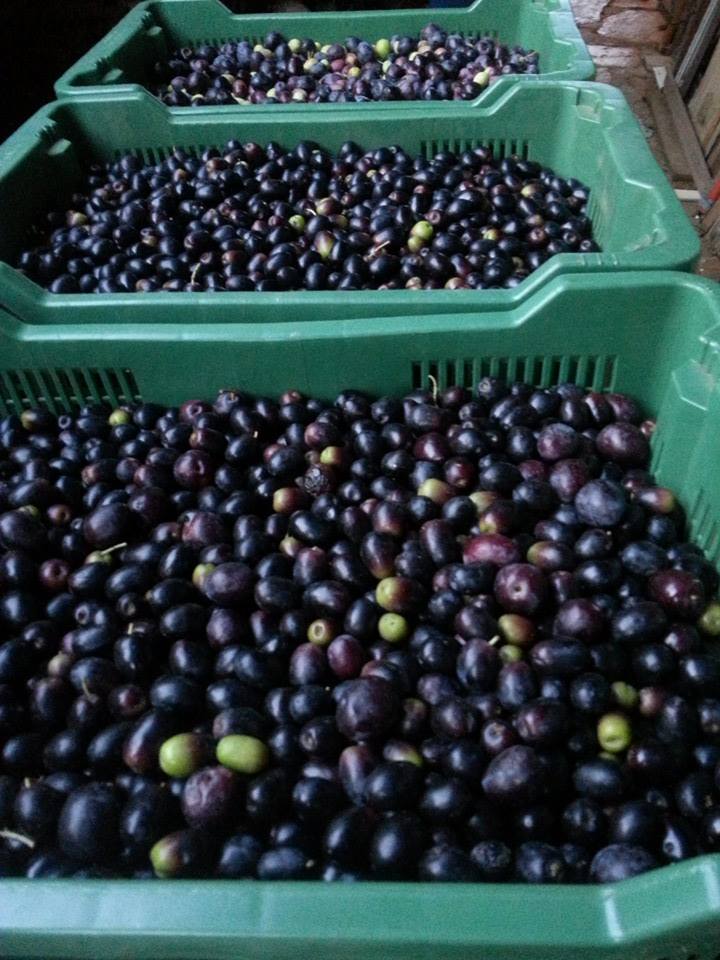
Depending on a number of factors, including the weather and number of pickers, the harvest for our family will take anything from three to eight days.
The precious olives are collected in containers.
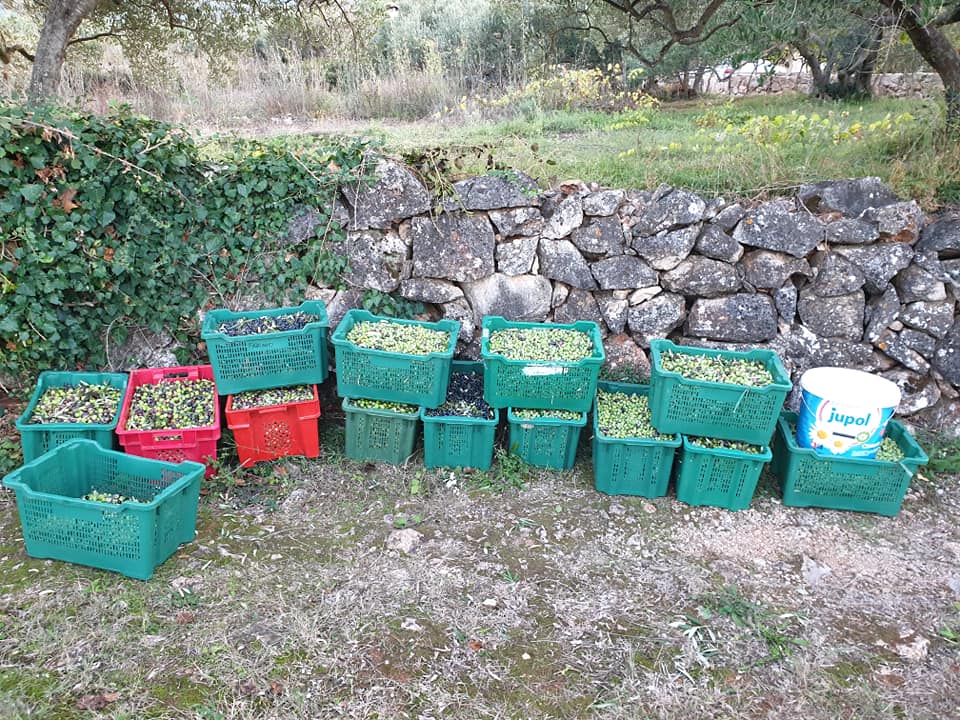
At the end of each day, they are taken off to the olive mill close by and pressed.
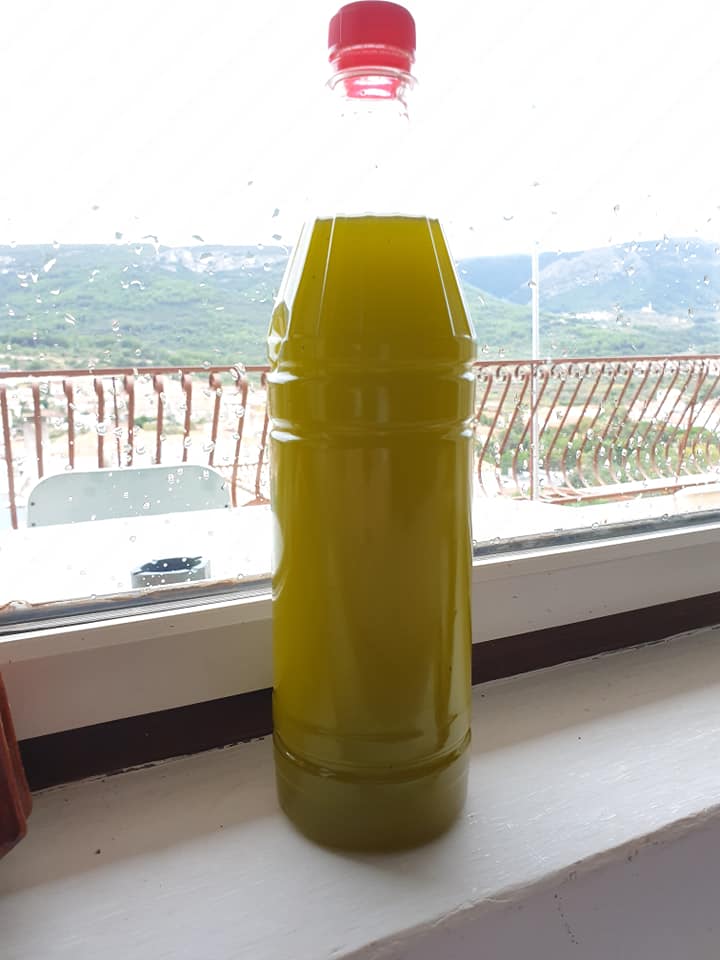
And one of the rewards for all the hard work will be several litres of this nectar, hopefully enough to service our annual needs back home in Varazdin.
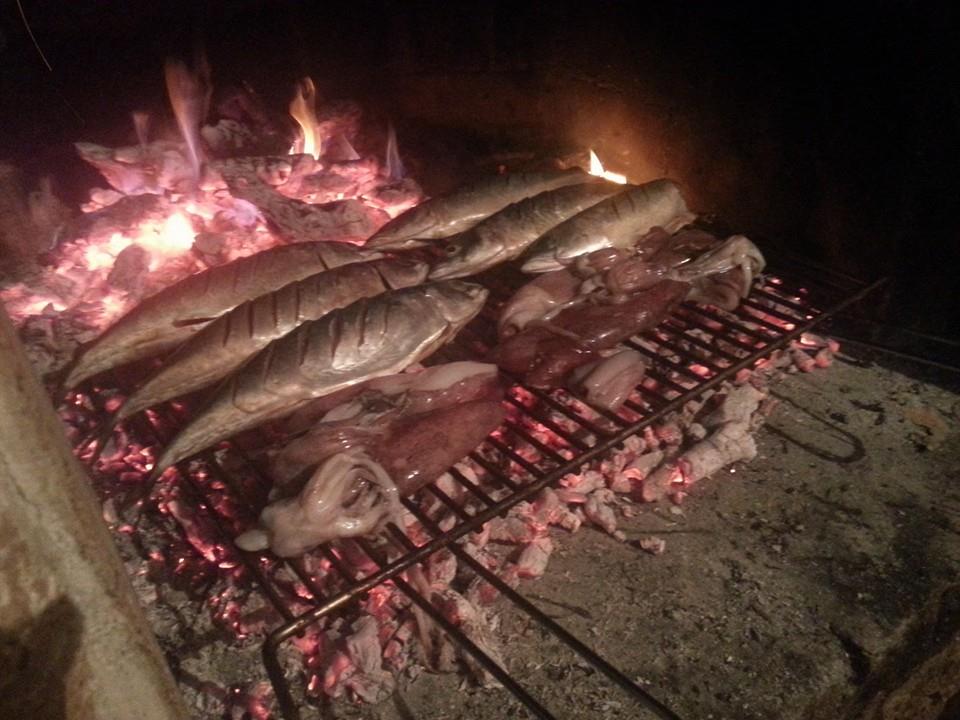
And one of the other rewards - and a definite highlight - is the daily grill for the workers in the cabin the field. Grilled meat or fish, salad from the field, the family rakija and wine, and plenty of the family olive oil of course.
Dalmatia at its very finest.
For the first time in several years, I will not be at the olive harvest this year. School and work commitments took care of that. I am a little sad, as I still feel the bond with my Koncar director, and I definitely feel the calling.
But then I started to smile inside, as I took my wife to Varazdin Bus Station for the early bus to Zagreb. There, she would meet her sister and older brother, who were both taking time off from their corporate jobs, and they would drive to the island together. Her other brother is already on the island, and the four siblings will be reunited with their parents but without the kids or spouses, for a few days in the field, some 25 years after finishing school and moving on with their lives.
I can't imagine a similar example of something like this in the UK, and I think it is brilliant. One more example, perhaps, of why the sense of community and family is so strong in Croatia.
Next year, I will be there.
For the latest travel info, bookmark our main travel info article, which is updated daily.
Read the Croatian Travel Update in your language - now available in 24 languages.
Join the Total Croatia Travel INFO Viber community.


